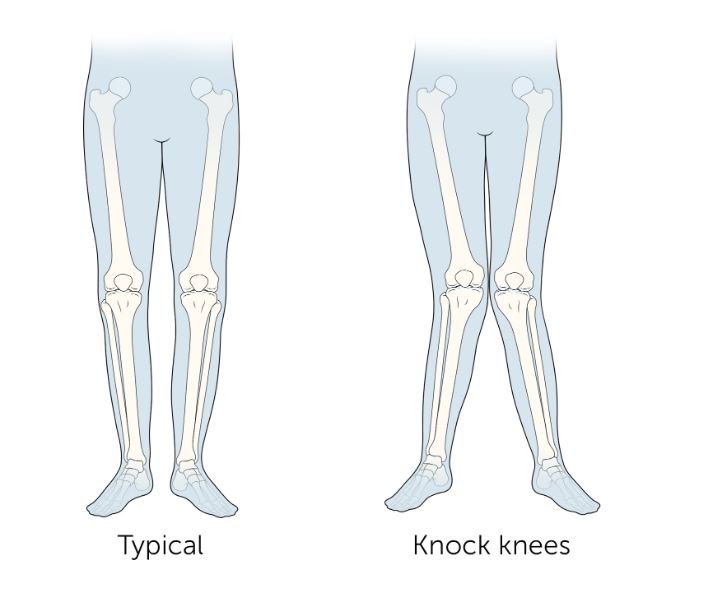What is knock knees? Causes, Symptoms, Diagnosis, and Treatment
Knock knees is a condition where your knees angle inward towards each other when you stand straight. This can cause your knees to touch or close together while your ankles remain apart. It's common in children and usually improves as they grow older, but in some cases, it can persist into adulthood. Treatment options depend on the severity and may include exercises, braces, or surgery in extreme cases.
How does the development of a child relate to knock knees?
A child's natural development frequently includes knock knees. Early in life, many kids go through phases of knock knees and bowlegs. In newborns up to roughly 24 months old, bowlegs—where the legs curve outward—are common. The symptoms of knock knees usually appear between the ages of 2 and 3 and can last until the legs normally align around age 7. Some children may have knock knees into adolescence, but most outgrow them as they develop and become stronger.
Symptoms & Causes
Knock knees, or genu valgum, can have various symptoms and causes:
Symptoms of Knock Knees:
- Discernible inward angulation of the knees when the feet are together.
- Knees in contact or almost in contact while standing with feet apart.
- Possible soreness or pain in the knee region.
- Walking or running difficulties, especially if the illness is severe.
- Knock knees can occasionally exacerbate conditions like foot pain or unusual shoe wear.
Causes of Knock Knees:
- Natural Growth: Knock knees are common in early childhood as a normal part of growth and development. Most children grow out of this condition on their own as they become older.
- Bone Development: Knock knees can result from conditions or factors that disrupt the normal development of bones.
- Obesity: Carrying too much weight can strain the knees and increase the risk of developing knock knees.
- Ligament laxity: The inward angling observed in knock knees may be caused by weakness or laxity in the ligaments surrounding the knee joint.
- Injury: If an injury to the knee or leg bones alters the alignment of the bones, it may result in knocked knees.
How Do They Diagnose Knock Knees?
A comprehensive evaluation of a patient's previous medical history, current health, family history, and pre-existing conditions is necessary to diagnose knock knees. A physical assessment of the patient's legs and an analysis of their gait are also included. A standing alignment X-ray is also included in the diagnosis. An image of the leg from the hip to the ankle is obtained by a standing alignment X-ray or EOS image, which aids the orthopedist in determining the location and mechanical axis of the deformity. The location and size of the deformity are shown on the X-rays.
What are the treatment options for knock knees?
Treatment for Children:
- Observation: Keep an eye on the condition's development because many cases get better with time.
- Physical therapy: Exercises to enhance alignment and build muscle.
- Bracing: If necessary, use orthotic devices for support.
- Weight management: To lose extra weight, promote a healthy lifestyle.
- Surgery (Rare): Reserved for extreme cases that show no improvement under other therapies.
Treatment for Adults:
- Physical therapy: Exercises and better alignment are the main focus, just like with children.
- Bracing: For comfort and support, use orthotic devices.
- Weight management: To protect your joints, keep a healthy weight.
- Pain Management: Use painkillers and take it easy to manage your discomfort.
- Surgery (Rare): Should only be considered in extreme circumstances involving severe pain or functional limitations.
